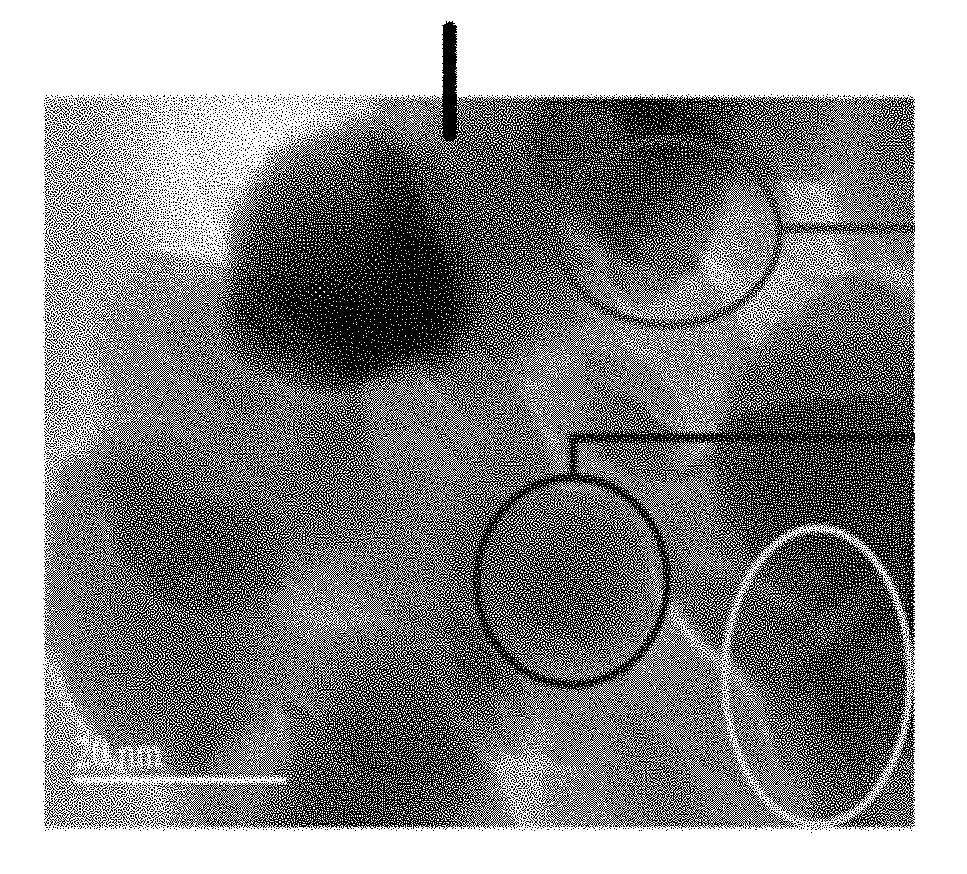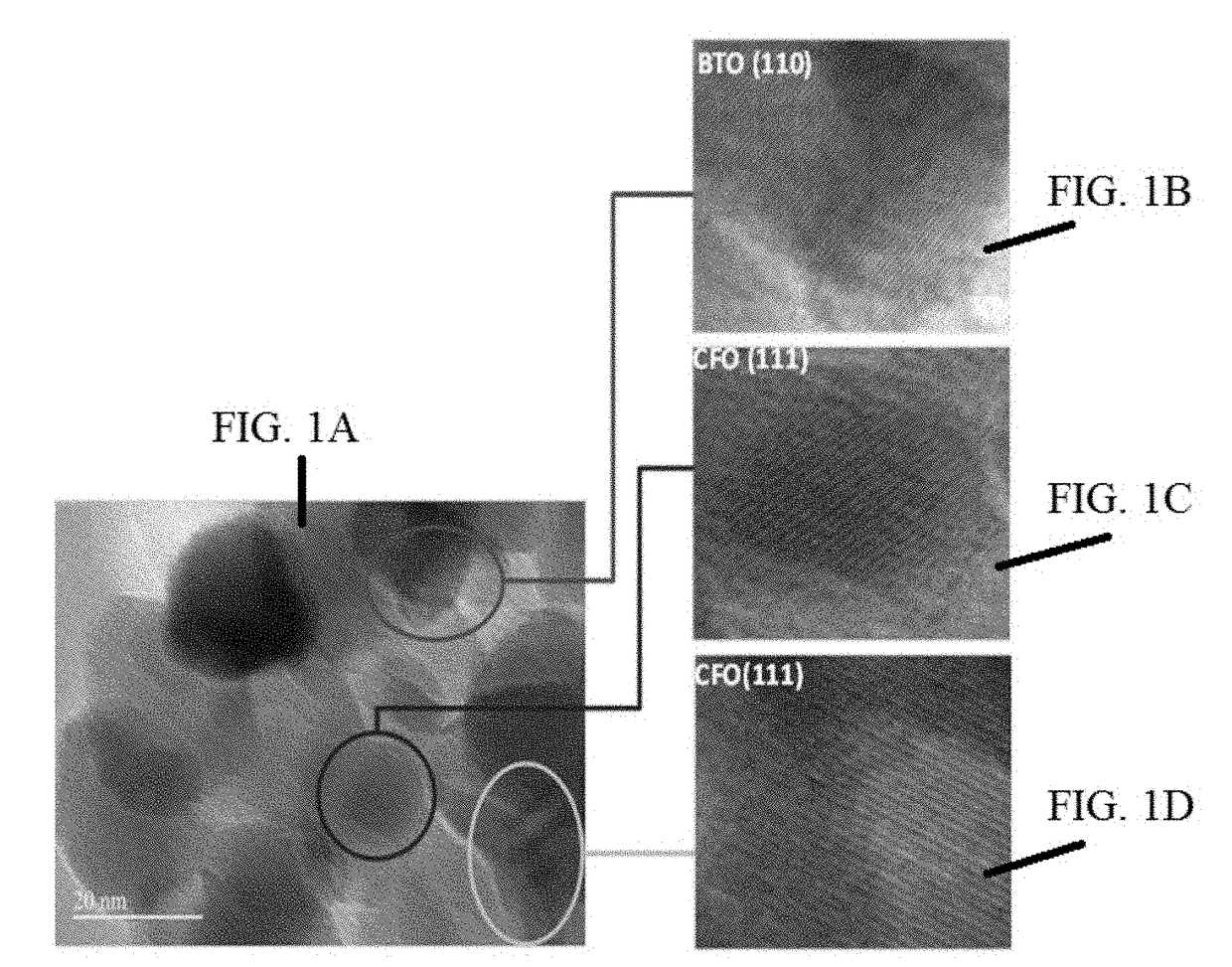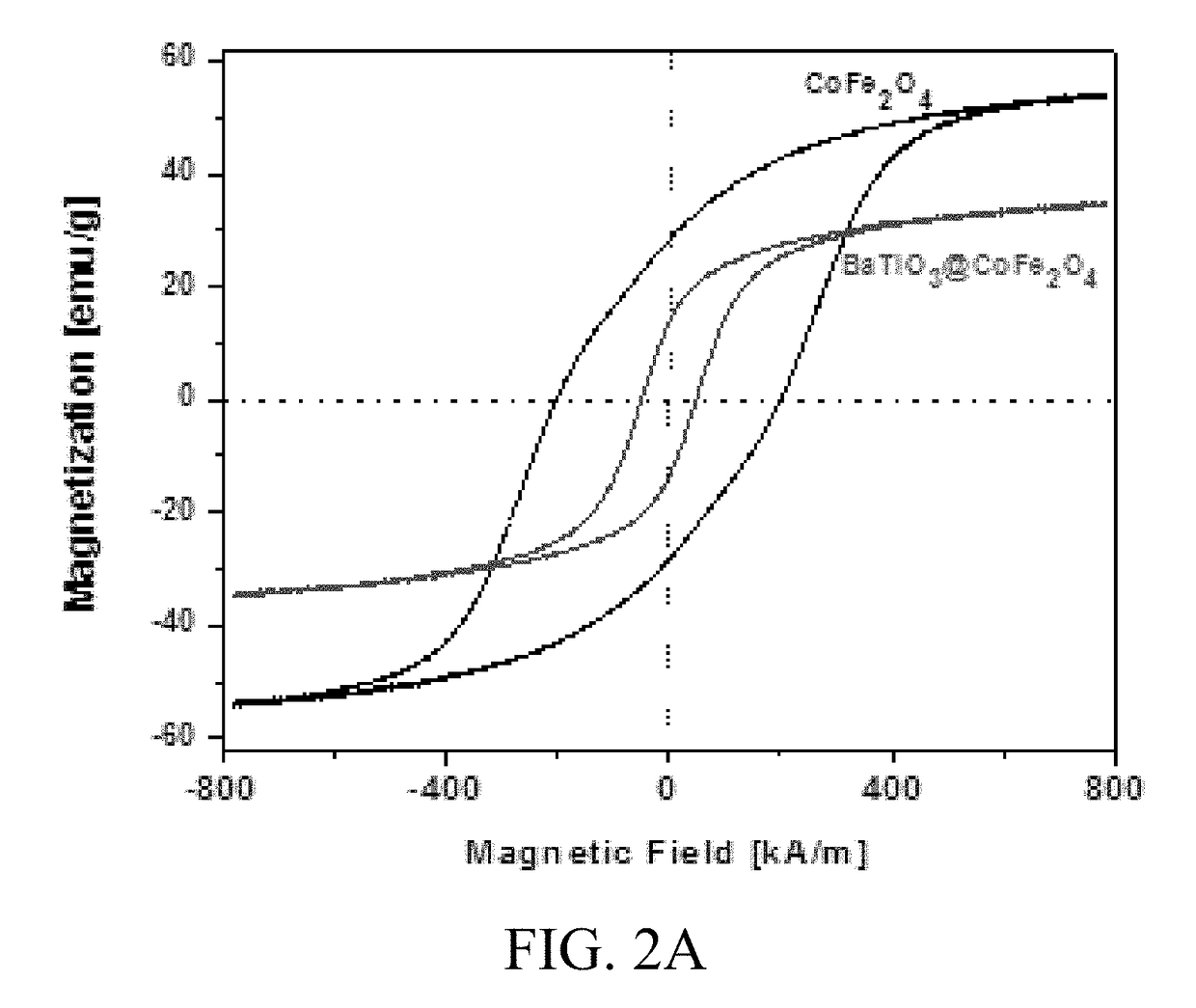Materials and Methods for the Delivery of a Nanocarrier to the Brain
- Summary
- Abstract
- Description
- Claims
- Application Information
AI Technical Summary
Benefits of technology
Problems solved by technology
Method used
Image
Examples
example 1
[0065]MENCs (BaTiO3@CoFe2O4) synthesis is a 3-step process as described in previous publications (Nair, M. et al. S. Externally controlled on-demand release of anti-HIV drug using magneto-electric nanoparticles as carriers. Nat. Commun. 4, 1707 (2013); Guduru, R. et al. Magneto-electric nanoparticles to enable field-controlled high-specificity drug delivery to eradicate ovarian cancer cells. Sci. Rep. 3, 2953 (2013)). In brief, CoFe2O4 nanoparticles were prepared using a hydrothermal method. Step 1), 15 mL of aqueous mixture of 0.058 g of Co(NO3)2.6H2O+0.16 g of Fe(NO3)3.9H2O was combined with a second mixture of 0.2 g of polyvinylpyrrolidone (Average molecular weight was about 40,000 Dalton) dissolved in a 5 mL of aqueous solution with 0.9 g of sodium borohydride and heated at 120° C. for 12 hours. Step 2), the precursor solution of BaTiO3 was prepared by mixing a 30 mL aqueous solution containing 0.029 g of BaCO3 and 0.1 g of citric acid with a 30 mL ethanol solution containing 0....
example 2
[0071]An MTT [3-(4, 5-Dimethylthiazol-2-yl)-2, 5-Diphenyltetrazolium Bromide] assay was used to study in-vitro cytotoxicity. Human astrocytes and SKNMC (1×106 cells / well) were grown in 6-well plates. Grown cells were treated with 100 μL of various MENCs doses (0.05-1 mg / mL). IACUC-approved doses were (5 to 20 mg / kg) for these experiments. For MTT assay, MENCs doses were back calculated with respect to the average mice weight of ˜20±1 gm as shown in FIGS. 3A-3B. Moreover, one dose less than 5 mg / kg and one higher than 20 mg / kg were also considered for MTT assay for better understanding.
[0072]Further, well plates were maintained in a humidifier incubator with an internal environmental consisting in 95% air and 5% CO2 at 37° C. After 48 days of incubation, one mL medium supplemented with 100 μL of MTT (100 mg MTT / 20 mL PBS) was added to each well and incubated at 37° C. for 3 hours. Later, one volume of detergent reagent (20% SDS in 50% DMF) was added, rocked for about 2 hours, and the...
example 3
[0074]An optimized dose of MENCs (10 mg / kg with respect to 20±1 g mice) was used for injection in C57Bl / J mice (n=6 / group, control n=6 / group, males and 6 weeks old) in all experiments. (Charles River Laboratory, Inc., Wilmington, Mass.). MENCs were suspended in phosphate-buffered saline (PBS) in order to make an injection suspension.
[0075]A single dose (10 mg / kg) of MENCs was administered intravenously (i.v.-administration) in each mouse. Each mouse was sedated and its head placed in a stable external magnetic field (0.8 T) (FIG. 3C). The injected dose was selected to correspond to a human dose of 6.5 mg / kg to 20.3 mg / kg by interspecies allometric scaling factor.
[0076]After 3 hours of incubation, mice were kept at the normal cage condition under observation for a week. Intermittent blood samples were collected at days 2 and 7 in order to check Hematoxylin and eosin (H&E) staining and blood toxicity. The plasma supernatant was stored at −80° C. for analysis. Serum samples were analyz...
PUM
 Login to View More
Login to View More Abstract
Description
Claims
Application Information
 Login to View More
Login to View More - R&D
- Intellectual Property
- Life Sciences
- Materials
- Tech Scout
- Unparalleled Data Quality
- Higher Quality Content
- 60% Fewer Hallucinations
Browse by: Latest US Patents, China's latest patents, Technical Efficacy Thesaurus, Application Domain, Technology Topic, Popular Technical Reports.
© 2025 PatSnap. All rights reserved.Legal|Privacy policy|Modern Slavery Act Transparency Statement|Sitemap|About US| Contact US: help@patsnap.com



